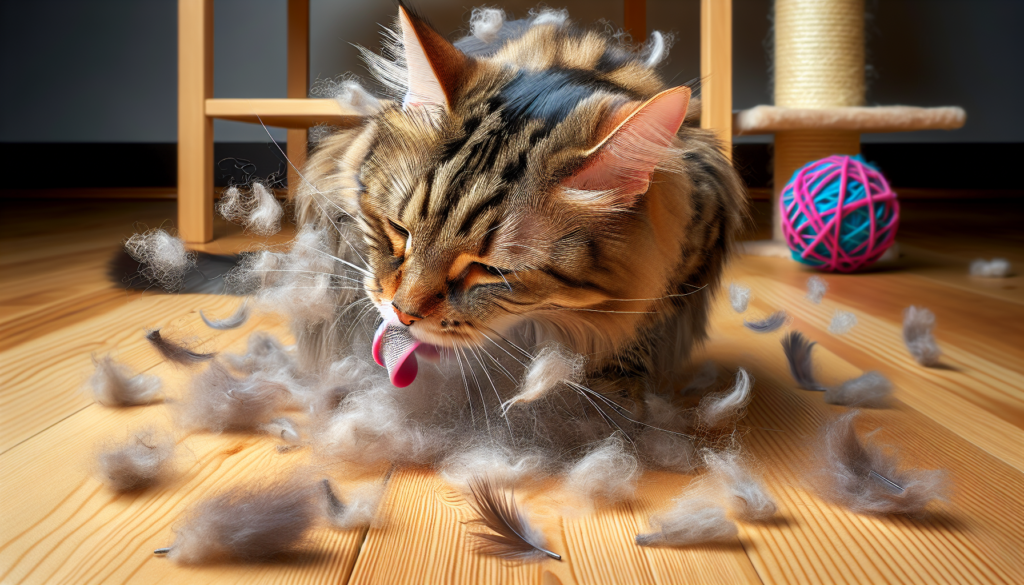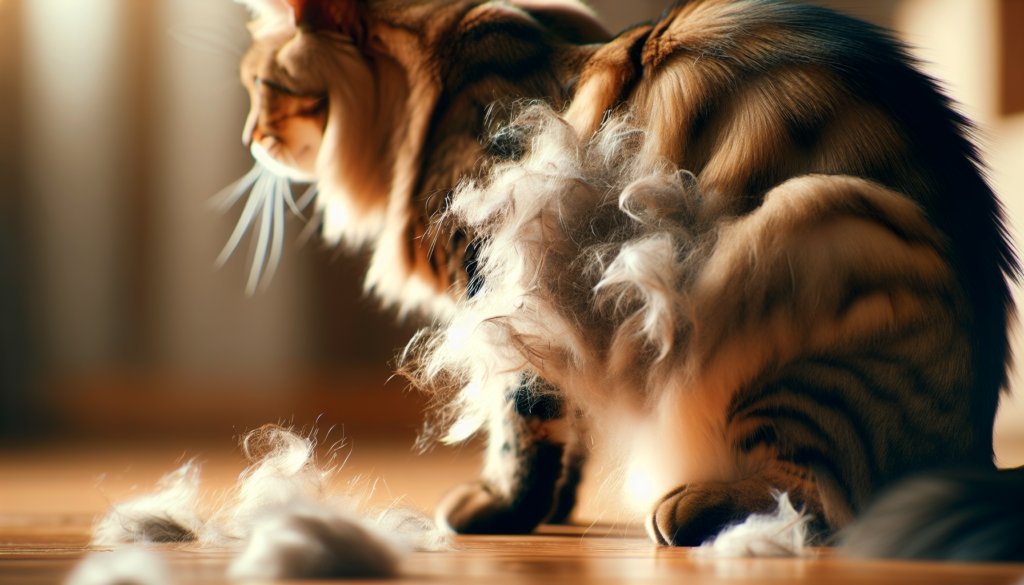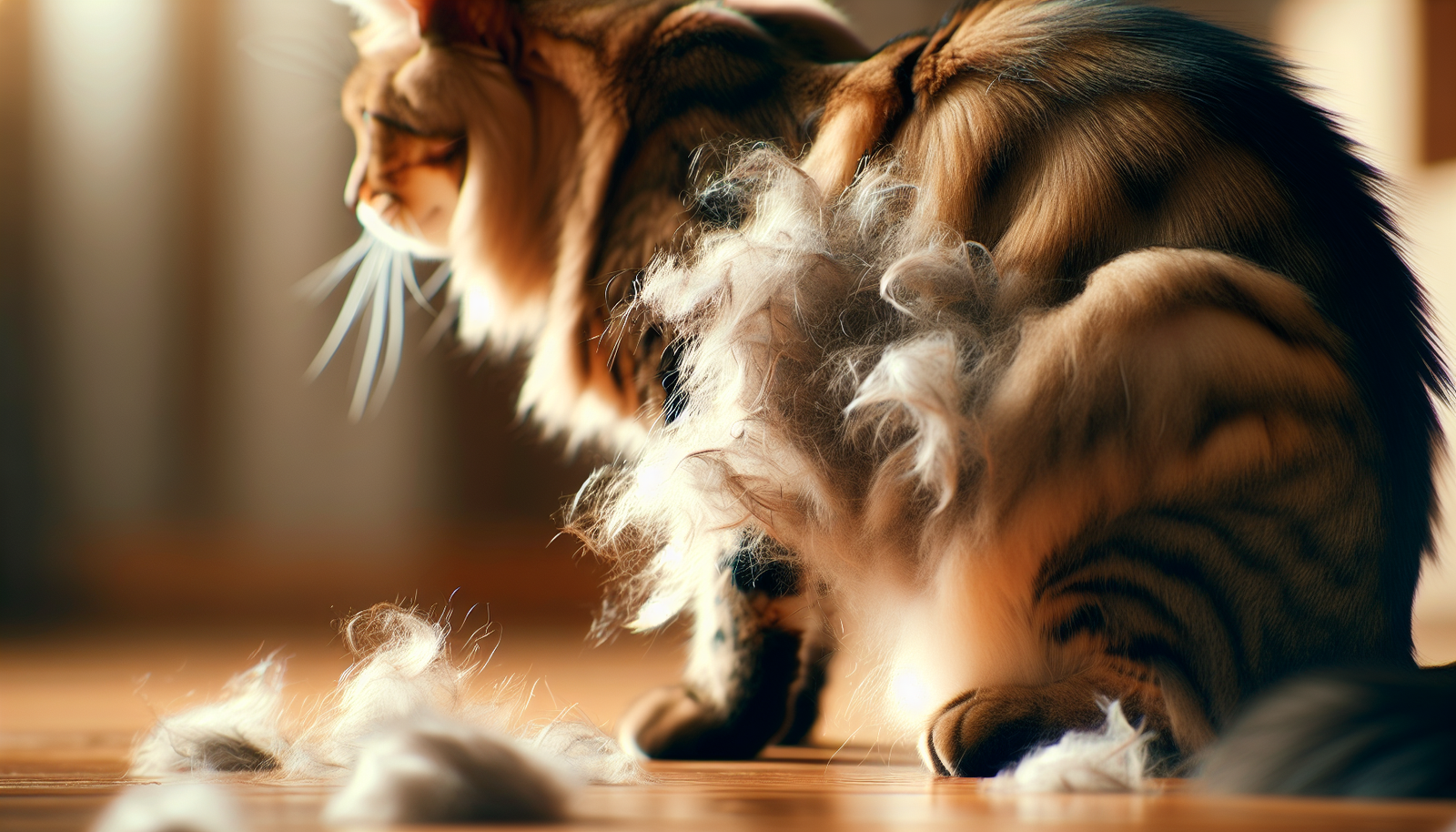Do you often find yourself covered in a blanket of cat fur? If you own a tabby cat, shedding may be a common sight in your home. But have you ever wondered why tabby cats shed so much? In this article, we will explore the reasons behind their shedding habits and discover just how much fur you can expect to find around your house. So, if you’re curious to unravel the mystery behind your tabby’s shedding, read on!

Why Do Tabby Cats Shed?
Having a furry friend like a tabby cat can bring so much joy to your life. Their playful nature, affectionate personality, and unique coat patterns make them a beloved choice for many cat owners. However, one concern that might cross your mind is the issue of shedding. Yes, tabby cats do shed, but understanding why can help you manage their grooming needs effectively and maintain a healthy coat for your feline companion.
Different Types of Tabby Cats
Tabby cats come in various patterns and colors, adding to their allure and individuality. Here are a few of the different types of tabby cats you might come across:
Classic Tabby
The classic tabby pattern features bold, swirling, and marbled markings on the cat’s coat. These patterns often resemble a bullseye on the sides of the cat’s body, which is quite distinctive.
Mackerel Tabby
Mackerel tabby cats have narrow, vertical stripes on their body that resemble the bones of a fish. These stripes radiate from the cat’s spine, creating an elegant pattern.
Spotted Tabby
Spotted tabby cats have spots or oval shapes on their coats. These spots can be large or small and are evenly distributed over the cat’s body, giving them a striking appearance.
Patched Tabby
Patched tabby cats, also known as tortoiseshell tabbies or torties, have a combination of tabby markings and patches of colors. These cats often have a mix of black, brown, and orange fur patches on their coats.
Tortoiseshell Tabby
Tortoiseshell tabby cats have a distinct mix of colors in a mosaic-like pattern. Their coats can consist of black, orange, brown, and sometimes even white fur, creating a beautiful tapestry.
Coat Characteristics of Tabby Cats
In addition to their captivating patterns, tabby cats have unique coat characteristics that contribute to their shedding. Understanding these traits can help you manage their grooming needs better.
Tabby Cat Coat Patterns
Tabby cats have a resilient double-layered coat that consists of guard hairs and an insulating undercoat. These coats are designed to protect the cat from different weather conditions. The pattern on their coat doesn’t directly influence shedding but adds complexity to their grooming needs.
Tabby Cat Fur Length
The length of a tabby cat’s fur can vary from short to long, with some cats having medium-length fur. This fur length affects the amount of hair that sheds and how visible it may be on your furniture or clothing. Longer-haired tabbies may shed more visibly, while shorter-haired tabbies may have lighter shedding.
Understanding Shedding in Cats
Shedding is a natural process for cats, including tabbies, as it allows them to replace old or damaged hair with new growth. Here’s a closer look at the shedding process and the factors that influence it.
Shedding as a Natural Process
Shedding occurs as part of a cat’s hair growth cycle. The hair shafts on a cat’s body have two main phases—growth and resting. During the growth phase, new hair develops, while the resting phase allows the hair to rest and eventually fall out, making way for new growth. Shedding ensures that a cat’s coat remains healthy and helps regulate their body temperature.
Anatomy of a Cat’s Hair Shaft
A cat’s hair shaft consists of three layers: the medulla, cortex, and cuticle. The medulla is the innermost layer and provides structural support, while the cortex contains the pigment that gives their fur color. The outermost layer, the cuticle, protects the hair shaft from damage. The shedding process primarily involves the cuticle weakening and the hair strand being pushed out by new growth.
Hair Growth and Resting Phases
The hair growth and resting phases in cats vary depending on factors such as breed, age, health, and environmental conditions. The length and intensity of each phase can influence how much and when a cat sheds. For example, kittens and younger cats may experience more frequent shedding as their hair growth cycle is faster than in adult cats.

Factors that Influence Shedding
Several factors can influence the shedding patterns of tabby cats. Understanding these factors can help you identify the underlying causes and manage their shedding effectively.
Season and Climate
Seasonal changes and climate play a significant role in a cat’s shedding patterns. Many cats, including tabbies, have a natural shedding cycle that coincides with the change in seasons. As the weather becomes warmer, cats shed their thick winter coats in preparation for lighter summer coats. Conversely, as winter approaches, they shed their lighter coats to grow thicker ones for protection against the cold.
Indoor vs. Outdoor Cats
Indoor and outdoor cats may have different shedding patterns due to various factors. Outdoor cats may shed more as they are exposed to different elements, such as dirt, dust, pollen, and parasites, which can impact their coat health. On the other hand, indoor cats may shed more consistently throughout the year due to the constant temperature and controlled environment.
Age and Hormonal Changes
Age and hormonal changes can greatly influence shedding in tabby cats. Kittens and young cats may have more frequent shedding due to their rapid growth and development. Female cats also experience shedding when they go through heat cycles or after giving birth. Neutering or spaying can sometimes affect hormonal balance and alter shedding patterns.
Stress and Anxiety Levels
Just like humans, cats can experience stress and anxiety, which may contribute to increased shedding. Changes in their environment, such as moving houses, introducing a new pet, or disruptions in their daily routine, can trigger shedding. Reducing stress and providing a calm and safe environment for your tabby can help minimize excessive shedding.
Genetics and Breed Influence on Shedding
The shedding tendencies of tabby cats can also be influenced by genetics and their specific breed. Here’s a closer look at how these factors come into play.
Inherited Coat Characteristics
Coat characteristics, including shedding patterns, are often inherited from a cat’s parents. If both parents have a heavy-shedding coat, it’s likely that their offspring, including tabbies, will shed more. Similarly, if the parents have minimal shedding, their kittens are more likely to inherit this trait.
Breed-Specific Shedding Traits
Different cat breeds can have varying shedding tendencies. Some cat breeds, such as the Maine Coon or the Siberian, have dense, thick coats that require regular grooming to manage shedding. Other breeds, like the Siamese or the Sphinx, have shorter or almost nonexistent fur, resulting in minimal shedding.
Seasonal Shedding Patterns
Tabby cats, like many other breeds, exhibit seasonal shedding patterns. Understanding these patterns can help you prepare for their grooming needs accordingly.
Spring Shedding
As spring approaches and the weather warms up, cats, including tabbies, shed their thicker winter coats. This shedding helps them adjust to the rising temperatures and allows for a lighter coat during the summer months.
Fall Shedding
In preparation for the colder weather, cats shed their summer coats and grow thicker winter coats during the fall. This shedding ensures that they have adequate insulation and protection from the colder temperatures.
Year-Round Shedding
While tabby cats may have more noticeable shedding during seasonal transitions, shedding can occur year-round. Depending on factors such as indoor/outdoor living, age, and breed, tabby cats may shed consistently throughout the year, albeit at varying intensity.
Health and Diet Effects on Shedding
A cat’s overall health and diet can have a significant impact on their shedding patterns. Here are a few factors to consider when it comes to managing shedding in your tabby cat.
Nutritional Deficiencies and Excesses
Diet plays a crucial role in maintaining a healthy, shiny coat for your tabby cat. A balanced and high-quality diet can minimize excessive shedding. Nutritional deficiencies, such as a lack of essential fatty acids or certain vitamins and minerals, can lead to dull, brittle fur and increased shedding. Conversely, overfeeding or a diet lacking in proper nutrients can also impact a cat’s coat health and shedding pattern.
Skin Conditions and Allergies
Skin conditions or allergies can contribute to excessive shedding in tabby cats. Skin allergies caused by environmental factors or certain foods can cause itchiness and inflammation, leading to excessive scratching and hair loss. Identifying and addressing these underlying issues can help manage shedding more effectively.
Underlying Medical Issues
Sometimes, excessive shedding can be a sign of an underlying medical condition. Conditions like hormonal imbalances, parasites, or infections can affect a cat’s coat health and cause increased shedding. If you notice a significant change in your tabby cat’s shedding patterns, it’s essential to consult a veterinarian to rule out any potential health concerns.
Managing Shedding in Tabby Cats
While shedding is a natural process for tabby cats, there are ways to manage it effectively and keep your home clean and free from excessive cat hair.
Regular Brushing and Combing
One of the most effective ways to manage shedding in tabby cats is through regular brushing and combing. This helps remove loose hair before it can be shed all over your furniture and clothing. The frequency of brushing will depend on your cat’s fur length, with longer-haired tabbies requiring more frequent grooming sessions.
Using a Shed-Control Shampoo
Using a shed-control shampoo during your tabby cat’s baths can help minimize shedding. These shampoos are formulated to reduce shedding by strengthening the hair shafts and promoting a healthier coat. However, it’s important to choose a shampoo specifically designed for cats and follow the instructions carefully to avoid any skin irritation.
Providing a Calm and Stress-Free Environment
Creating a calm and stress-free environment for your tabby cat can help minimize excessive shedding caused by anxiety. Providing hiding spots, engaging in regular play and exercise, and maintaining a consistent routine can help reduce stress levels in your feline friend and, in turn, reduce shedding.
Feeding a Proper Diet for Healthy Coat
A balanced and nutritious diet is crucial for maintaining a healthy coat in tabby cats. Here are a few key points to consider when it comes to their dietary needs.
Importance of a Balanced Diet
Feeding your tabby cat a balanced diet that meets their nutritional requirements is essential for overall health and coat maintenance. Ensure that their diet includes high-quality proteins, healthy fats, vitamins, and minerals to support a glossy and healthy coat.
Choosing High-Quality Cat Food
When selecting cat food for your tabby, opt for high-quality options that specifically address coat health. Look for foods that are rich in essential fatty acids, such as omega-3 and omega-6, as these help promote a healthy coat. Always consult with your veterinarian to determine the most suitable diet for your cat’s individual needs.
Supplementing with Omega-3 Fatty Acids
If your tabby cat’s coat requires an extra boost, consider supplementing their diet with omega-3 fatty acids. These can be found in fish oil supplements or through food sources rich in these essential fatty acids, such as salmon. Omega-3 fatty acids help improve the overall health and condition of a cat’s coat, reducing shedding.
In conclusion, shedding is a natural and necessary process for tabby cats. Understanding the various factors that influence shedding can help you manage their grooming needs effectively and maintain a healthy coat. With regular grooming, a balanced diet, and a stress-free environment, you can ensure that your tabby cat’s shedding remains under control, allowing you to enjoy their company with minimal fuss.

